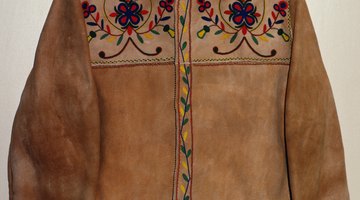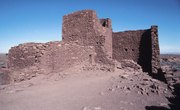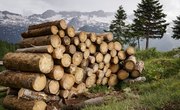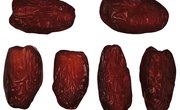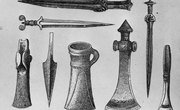American Indians have been tanning deer hides for centuries, but the process is more of an art than a science. Although all tribes used materials from the natural world to produce velvety-smooth leather, there were variations in techniques. Some used nearby streams to remove the hair from the hide while others wet-scraped the skin after soaking it in a wood ash and water solution. Other tribes scraped the hide when it was dry. Even with these differences, there are trends that unite the tanning practice.
Fleshing
Before any tanning took place, every bit of fat and meat from the hide’s flesh side was removed. Traditional tools for this task were made of bone, stone or wood. Typically the hide was stretched over a sturdy, flat surface, draped over a smooth log or laced and stretched over a wooden frame where it was scraped clean. This step was very important; if fat and meat remained on the hide it wouldn’t tan evenly.
Dehairing
American Indians tanned some hides with the hair on, but if the leather was being used for something like moccasins or clothing then the hair was often dry-scraped from the hide using an antler or wood scraper. Some tribal members soaked the hide in a solution of water and wood ash before scraping, or simply weighed it down with rocks and put it in a fast-moving stream to let the water’s motion do most of the work.
Tanning
A fleshed and dehaired hide was sometimes dried and used raw. Rawhide is a particularly strong material used for making items like snowshoes, storage containers and ropes. But when the tribal member wanted leather, he tanned the hide by rubbing it with a paste made of the animal’s brain cooked in a small amount of water. Once the paste was rinsed out, he stretched and worked the hide until it softened.
Smoking
If waterproof leather was needed, the tanned hide went through an additional step -- it was smoked over an open fire. The tanner built a smoldering fire with green or rotted wood in a shallow, 6- to 8-inch-deep pit. The hide was lightly sewn into a bag shape or draped over sticks and hung over the smoking fire until it turned the desired shade of brown.
Related Articles
Writer Bio
Suzanna Didier's work appears in online publications including the National Geographic website, SFGate and Local.com. She is an avid cook who lives on a hobby farm, direct-markets organic produce to local restaurants and has taught at the preschool, elementary and college levels. Didier holds a Master of Arts in education from the University of Oregon.

